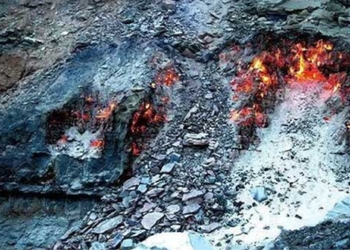A newly discovered helium deposit in Minnesota boasts a record high helium concentration of 13.8%, promising to address the ongoing shortage of this gas.
The resource exploration company Pulsar Helium announced the discovery of a massive helium deposit at the end of February, following drilling near Babbitt, northern Minnesota, USA, to a depth of 670 meters. Initial measurements indicated a helium concentration of 12.4%. However, new analysis has surpassed this figure, as reported by Live Science on April 3rd.

Pulsar Helium drilling head in Minnesota, USA. (Photo: Thomas Abraham-James).
The new analysis reveals that the helium concentration in the Minnesota deposit reaches 13.8%, the highest ever recorded in the industry. “That’s an incredibly large number, as only 0.3% to 0.5% helium or higher is typically of interest,” said Thomas Abraham-James, President and CEO of Pulsar Helium.
|
Although helium is the second most abundant gas in the universe, it is rare on Earth and forms only through nuclear fusion reactions or the radioactive decay of uranium and thorium. Typically, helium is collected as a byproduct of natural gas production, since helium accumulates underground in methane pockets and other hydrocarbons (methane being a type of hydrocarbon). Minnesota is one of the few places in the world where helium exists without hydrocarbons. Other locations include Greenland, southern, and eastern Africa. All these areas have granite crust rich in uranium and thorium, along with a fault system that fractures the rock, allowing helium to escape (this helium is generated through radioactive decay). Volcanic activity then releases helium atoms from the rock. “The final necessary component is a place to hold all of this, which could be a sedimentary basin or a magma block like in our project. This area has seen 1.1 billion years of accumulation, which may explain why the concentration is so high,” Abraham-James explained. Liquid helium is now crucial as a coolant in nuclear reactors, rockets, superconductors, and medical diagnostic equipment, but due to limited supplies, some sectors are facing severe shortages. Helium is notoriously difficult to store, and depending on the type of container, it begins to dissipate within 25 to 45 days after extraction. Abraham-James noted that most helium worldwide is mixed with hydrocarbons and escapes from the ground in an uncontrolled manner, after which the clock starts ticking to deliver helium to customers. However, the Minnesota deposit could potentially provide helium in a ready state. Experts are currently examining the data obtained from this site to determine its scale and characteristics. They need to conduct further measurements to estimate the pressure at which this gas is stored and the expected flow rate once released from that pressure. According to Abraham-James, results are expected by mid-year, which will help determine whether the Minnesota deposit is suitable for commercial production. |





















































